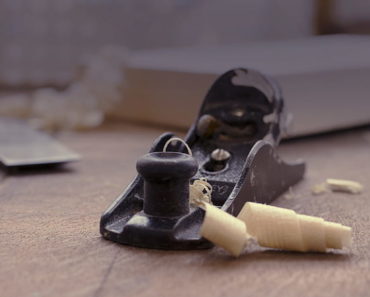In the woodworking activity , we act we wood and we create carpentry projects for job , or just for our inner happiness . To do these actions we need some materials , in order to shape our wood pieces and have the results we want .
These materials called woodworking tools and for sure the carpentry planes ( or planers if you like ) , are major tool “columns” .
These planes are helping the most your wood actions and i don’t know a carpenter who doesn’t have many of them , “sitting” on his workbench .
The woodworking plane is a hand tool that consists of a sharp enough blade(like a chisel) of high quality’s steel , attached to a parallelogram piece of wood or metal( used as frame ) , angled through it entirely from side to side and only visible by a tiny portion(the sharp edge) on the outlet side of this frame .

Moving under control , the entire “construction”(frame + steel blade) forward , this tiny seen steel part , scratches – slices – smoothen the wooden board , “eating” the wood’s “flesh” .
I’ve picked some of my top plane suggestions for you , see them in HERE .
In this way we smoothen it , we make it more flat and correct , we “plane” it . This is a simple approach of the woodworking plane .
The plane is a wood machinery equipment , all the carpentrs need to have and it’s a basic tool . Using the plane , you can scratch “targeted” wood areas on your boards , make them straight by flatten a specific area and “correct” them .
You can create decorative patterns with moulding planes , they help the most in your wood joinery and the generic dimensioning of your boards .
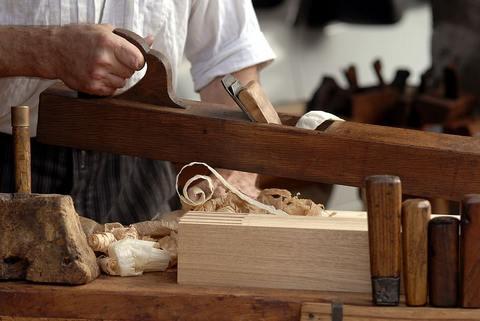
What is a Hand Plane made of and is there is something to be Cautious with ?
Hand planes are a combination of wooden parts and metalic ones . The wooden part of the plane , should be from a “hard” type of wood and there is a reason for this .
If you want to see info for the types of wood , see them in HERE .
We want our planes to be able to handle tough scratching “missions” and with the biggest accuracy and stability . We want the angled attached slade to be very stable inside the plane and to keep our adjustments , while we’re scratching wood .
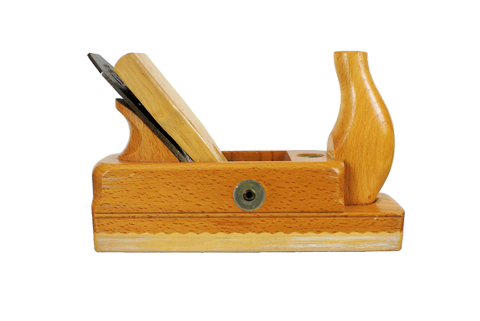
Imagine yourself wanting to flatten a hard board and during your scratching forward moves , the cutting blade , to not be able to keep the exact length , you’ve just adjusted it . Total mess to your nerves and maybe serious damage to your wood .
A hard type of wood is necessary for the plane’s body . Of course if your plane is fully metalic , you won’t any problem with that .
The blade of the wood planes , should be made from very good’s quality alloys of steel . This is very important . A good quality and expensive plane , should have the best possible steel quality for many reasons .
The “good” steel , gets sharpen more easily , “holds” its sharpness in many different scratching conditions( hard wood , difficult angles , joinery ) , needs less time to be well sharped and it can be easily “sharped fixed” , if something goes wrong .

In here you should be cautious to a very significant steel’s quality theme . You may choose whatever type of steel you want for your plane’s blade , nut remember that the “simple” steel is more “soft” and easier to handle , than the inox – stainless steel steel .
Inox steel is way more water , et.c resistant , but way more harder material to sharpen and handle with . Prefer the more “soft” types of steel . There’re easier to “deal” with and if you take care of them from hits , water , chems , et.c , you won’t have a problem .
What are the Types of the hand planes and do i need them all ?
In here the list is kind of big and i suggest you not to be stressed , in order to buy and have them all . You can start with some basic and “common” planes and then continue to buy more . Of course this depends to your carpentry projects and needs .
Some “famous” plane Styles are :
We have wooden planes(more vintage) , fully metalic planes( Bailey planes ) , Bed Rock planes from Stanley , “mixed” transitional planes( wooden body – metalic parts ) , low angle / bevel up from Stanley again and the vintage style British planes .
Let’s see the plane list :
1) The Jack Plane – Fore Plane .
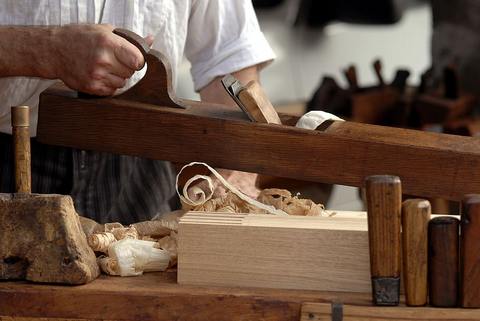
It’s a very “common” plane , it has a high angled blade and a big “mouth opening” .It’s for scratching much wood’s mass and “flesh” . They are a great beginner’s first plane choice , to start to learn scratching and they don’t cost much .
Remember this general hand plane “law” : Big plane “mouth” for scratching big wood’s mass – Small plane “mouth” fir scratching less wood’s mass .
2) Try Planes – Jointer Planes .
The try planes are used to make the sides of the wooden boards , as square as possible in order to join them , glue them . You flatten the joinery side and make it 90 degrees angle . Some try planes have billowy scratching surface to help you scratch oily and resin wood boards .
3) Smoothing Hand Planes .
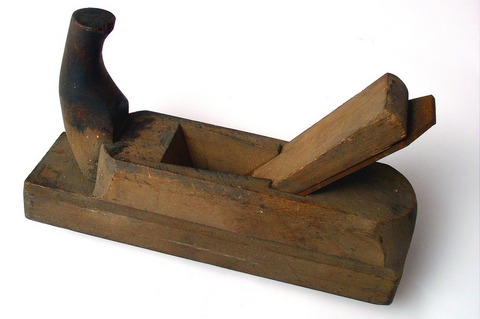
These planes are for smoothening and finishing your board . They are shorter than the others and one of the best plane style , is the Bed Rock , but there are more plane manufacturers( British style ,etc . ) to choose .
4) Block Planes .

These are very multilateral small sized planes , we use for many woodworking “jobs” . There are metalic ones and we creatye obligue finishes to end of our boards , for wood joints trimming and many more small , detailed jobs .
They can have low or high angle blades and they are very “flexible” , capable and comfortable to the hand because of their small size . You can do accurate “surgical scrathings .
5) Rabbet Planes , for Joinery .
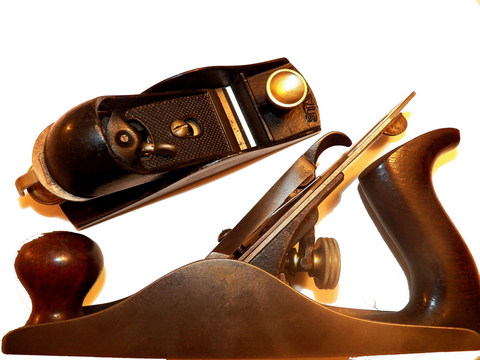
They are the most “common” and simple joinery planes . They just easy create a rabbet , at the end of your wood board . They have wooden and metalic bodies and the steel blade . Before you buy a woode one , you should check the body for twistings .
6) Shoulder Rabbet Plane .
They are the same as the rabbet ones , but they have adjustable “mouth” and they are metalic . They are low angled planes and you can improve the shoulders of your wood joints , as rabbets , moldings , et.c . A medium sized one , would do the majority of your trimming jobs .
7) Plow Planes .
They create a “tilth” at the board’s side and always along with the wood’s grain , not across it . These wood’s grooves are one of the most common wood joinery , many manufacturers use in their furniture .
8) Combination Planes .
They can do many plane “missions” from creating grooves , moldings , rabbet joints and many other joinery jobs . There’re multifunctional and you can attach many different blades , for several needs .
9) Tongue and Groove Plane .
They are very common in flooring and they create a tongue and a groove joint . This type of joinery is very nice and steady and can handle well the weather conditions expansions and shape changes , of wood .
10) Router Planes .
This plane is used to straighten the bottom side of a mortise joint , to straighten tenon cheeks and “clean” leveling the area on doors and wood coverings .
Their small width blade are adjusted with a screw and they are for decorative and refinement of joints .
11) The Single Profile Molding Plane .
You use the molding plane to create decorative patterns and the single molding plane , is cutting wood profile in one direction , only .
You have the board on your left or right ( depending to your “good” hand ) and you just moving repeated times , in order to create your paths .
12) Hollow and Round Planes .
The hollow plane makes arches to wood and the round plane creates rounded shapes . You can use them in all the grain’s directions and they exist in several sizes .
13) Bead Planes .
They are decorative molding planes and they create a bead pattern at the end of the board .
What the Numbers of the Hand Planes , Mean ?
As a woodworker ( amateur or not ) , you’ll need to make several kinds of wood plans and you’ll need many types and sizes of hand planes . In order the carpenters and manufacturers to have a basic understanding “code” , for the plane’s sizes , they called them by numbers .
These numbers are the plane’s “identity” and they indicate their lengths and their widths .
The most common are the : 1,2,3,4,41/2 , 5 , 51/2 , 6 , 7 , 8 .
Final thoughts and a safety Tip .
Don’t “tire your brain” with the so many plane types , their numbers , et.c , if you’re a beginner . Start with a basic , common one ( a jack plane – a smoothing one ) with low angle , in order to be comfort with its use .
Then as more experienced you’ll be , you’ll do more carpentry plane “missions” .
You should never forget , not to use your hands , or any other body part , to stabilize your board , while you’re using your hand planes . The danger to harm yourself is big .
Keep Woodworking .
